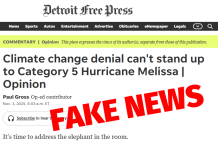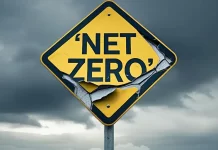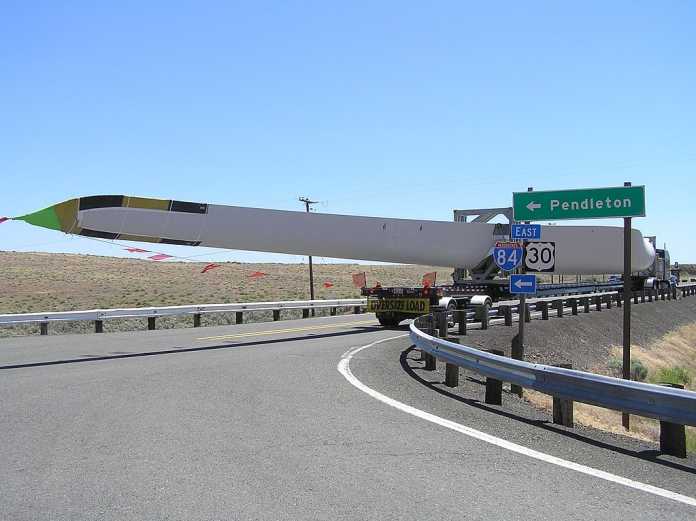A recent article in The Post Millennial reports on a dangerous wind turbine failure in rural Oregon, and explains that there are serious problems with the local electricity provider’s green ambitions. The Post Millennial is right, wind power has myriad drawbacks that power companies often gloss over or downplay. The people of Oregon are beginning to see that they have been dealt a bad hand, yet the state power utility still plans on moving to 100 percent renewables by 2045.
One of Oregon’s biggest wind facilities, at Biglow Canyon, has suffered a plethora of safety, environmental, and efficiency issues over the years, according to The Post Millennial.
In the article, “Oregon wind farm sees blades, bolts fly off as failures mount: report,” journalist Ari Hoffman explains that an eleven story tall turbine blade was flung off its tower, flew a hundred yards, and crashed into a nearby wheat field. The “heavy-duty bolts that kept the blade attached to the tower scattered like shrapnel,” wrote Hoffman.
This incident sparked official investigations and forced Portland General Electric (PGE) to shut down all 217 turbines at the facility for testing. Locals have reported other problems with Biglow Canyon’s operations for years.
The Oregonian previously detailed other problems with Biglow Canyon. In his Post Millennial article Hoffman discussed some of them:
- Operators failed to report other occurrences of parts flying off wind turbines, violating their operating agreement.
- Knowingly operated at least 4 broken turbines at the same location.
- Transformers rupture regularly, and turbine lubricants and oil spill out into the soil.
Hoffman also reports that the Biglow Canyon industrial wind facility produces significantly less power than was promised to the community and ratepayers, the latter of whom will have to pay for the replacement turbines. The turbines at the site are likely to be taken out of service after operating only half their projected lifespan.
“Landowners claim that Biglow Canyon’s windmills sometimes sit idle for months at a time,” Hoffman writes. What’s more, the “the facility has never hit the 37 percent of its rated capacity of 125.4 megawatts that was promised when the project began and instead has averaged 27.6 percent, well below projections.”
Previous reports posted on Climate Realism confirm Hoffman’s concern that wind power providers often oversell the benefits and hide or downplay the significant drawbacks tied to wind generated electric power.
As Climate Realism explained here, here, and here, for example, electricity generated by wind is often inefficient and unreliable. For example, when electricity is sorely needed due to difficult weather conditions like cold (or hot) temperatures, wind turbines are often not generating power due to an absence of or insufficient wind. Both Texas and California have already discovered this disappointing reality, and it looks like Oregon is figuring it out too.
Furthermore, wind power facilities have proven to cause more environmental damage than proponents have claimed. Climate Realism discusses the environmental impacts of wind here and here, for example. In the latter Climate Realism post, one Harvard study found that wind turbines actually have a net warming impact on the local area, because they slow and effect local wind patterns. Discussing the Harvard study, Heartland President, James Taylor wrote, “they [the researchers] found that many of the best locations for wind turbines are already utilized. This means future wind power installations will utilize lower-quality locations requiring many more turbines and much more land development to produce as the same amount of wind power.”
This added land use will undoubtedly have an impact on bird populations, bats, and other animals and their habitats, as discussed in Climate Realism here.
As Oregon and other states are discovering, there is more to the story of replacing conventional electric power generating sources with wind energy than just the nameplate specs and promises from utility providers. An educated citizenry is critical to making informed decisions that affect the power supply in particular and the wider economy that depends on reliable, affordable electric power, more generally. Articles like the one published by The Post Millennial can go a long way in educating people, and arming them with the pros and cons of wind power. A careful examination of the drawbacks of wind power should give local government pause when considering proposals for similar facilities.






















